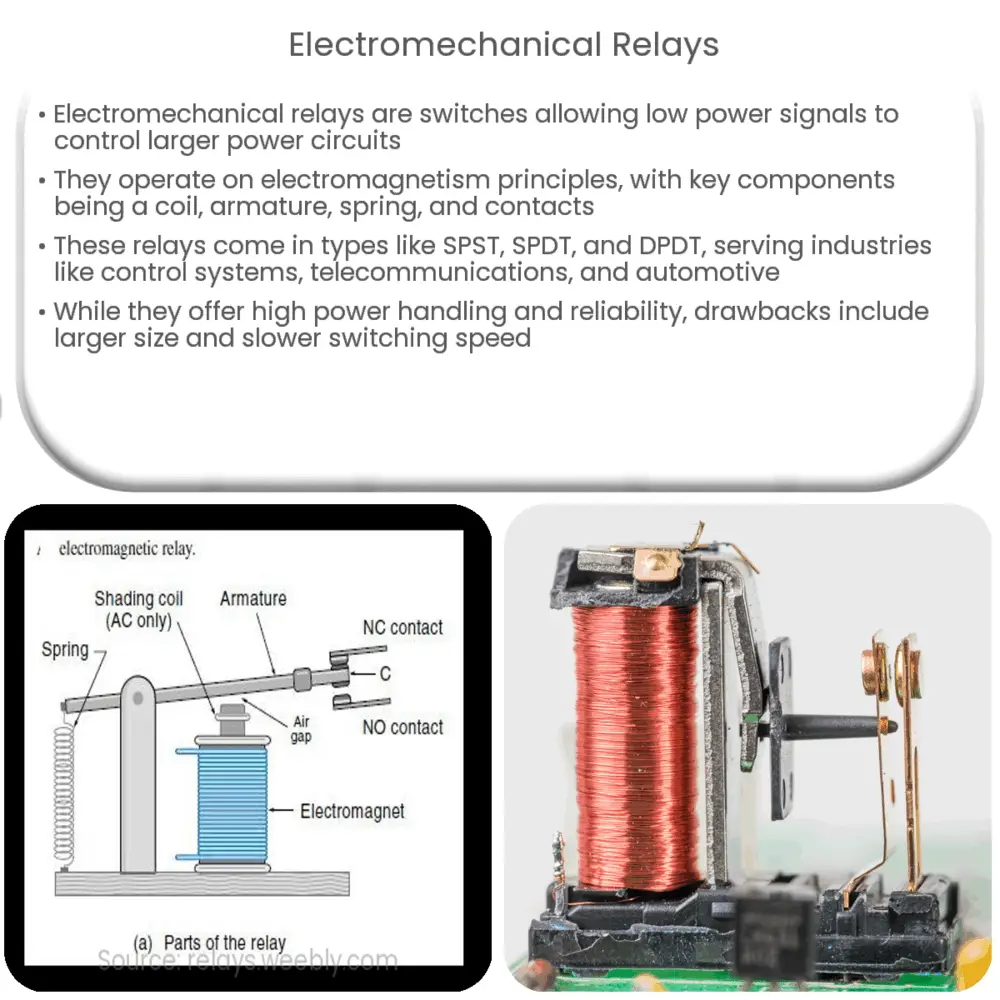Explore the workings, types, applications, advantages, and disadvantages of electromechanical relays in our comprehensive guide.

Introduction to Electromechanical Relays
An electromechanical relay is a switch that is commonly used in electrical systems. Its primary function is to enable a low power signal to control a much larger power circuit. The term ‘electromechanical’ stems from the relay’s operation mechanism, which is both electrical and mechanical in nature.
Working Principle of Electromechanical Relays
The working principle of an electromechanical relay revolves around the basic principles of electromagnetism. When an electrical current passes through a coil in the relay, it generates a magnetic field. This magnetic field then actuates a movable armature, which in turn, opens or closes a set of switch contacts.
Components of Electromechanical Relays
Typically, an electromechanical relay consists of four main components:
These components are often housed within a protective casing to prevent damage from environmental factors.
Types of Electromechanical Relays
Electromechanical relays come in a variety of types based on different parameters, such as contact configuration, structure, and the kind of application they are used for. The three most common types are:
Each type of electromechanical relay is designed for specific applications and offers distinct advantages.
Applications of Electromechanical Relays
Electromechanical relays are widely used across numerous industries due to their reliability and simplicity. Some common applications include:
Advantages and Disadvantages of Electromechanical Relays
Like any other device, electromechanical relays come with their own set of advantages and disadvantages.
The primary advantages include:
However, some notable disadvantages are:
Conclusion
In conclusion, electromechanical relays play a pivotal role in numerous applications in our everyday lives. Their ability to control large power circuits safely with small power signals makes them an invaluable component in many electrical and electronic systems. Despite some limitations, their reliability, straightforward operation, and robustness in a wide range of operating conditions continue to make electromechanical relays an integral part of various industries, even with the advent of newer solid-state technologies.

